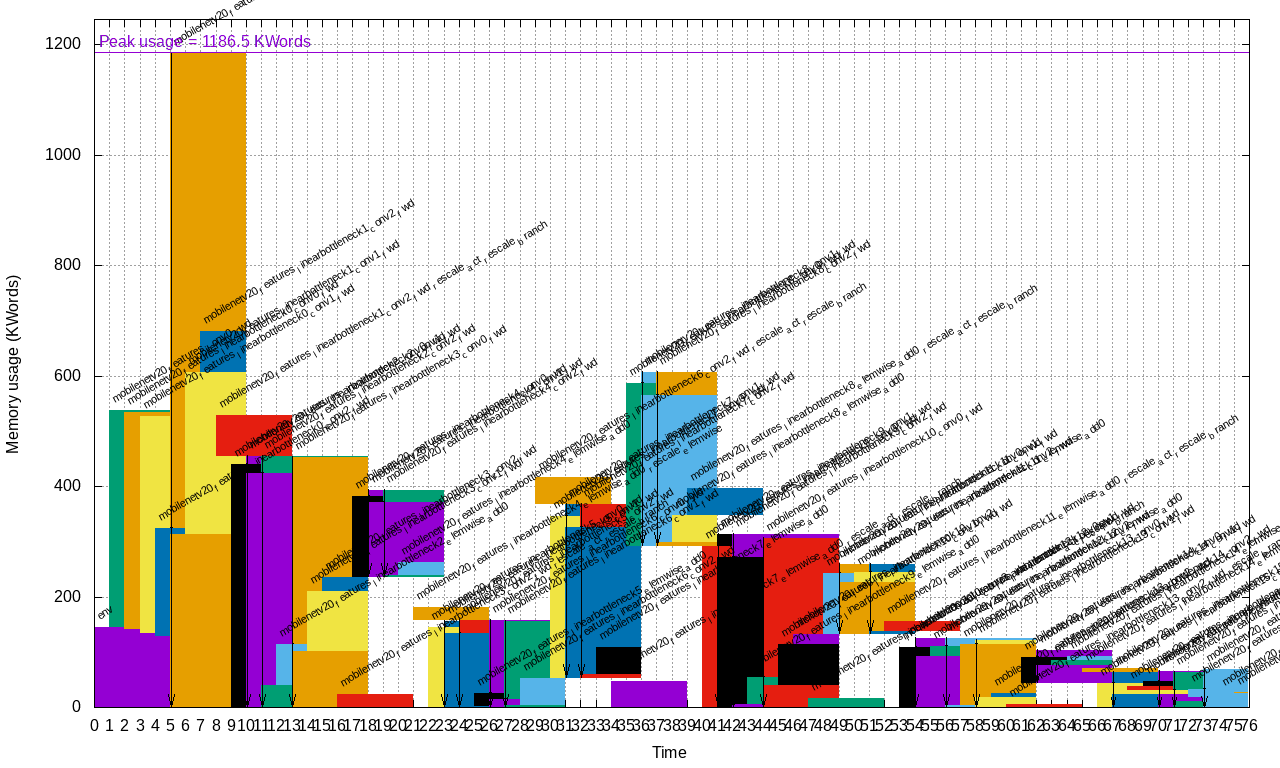Export: C++¶
- Export type:
CPP C++ export using OpenMP.
n2d2 MobileNet_ONNX.ini -seed 1 -w /dev/null -export CPP
Principle¶
The C++ export is the reference N2D2 export, which implements all the export features available in N2D2, like post-training quantization or quantization aware training.
Summary of the main features of a C++ export:
Standalone C++11 compliant project;
No C++ exception (often disabled on embedded code);
No <stream> library (which is memory bloated).
Fully templated compute kernels;
Fully inlined compute kernels;
No dynamic memory allocation;
Memory alignment support;
OpenMP parallelism.
- Data order
The input of a layer is ordered by Height-Width-Channels (HWC) and the weights of the kernel for a convolution by Output-Height-Width-Channels (OHWC). This order allows us to do read kernel_width × nb_channels inputs and weights sequentially in memory to do the necessary MACs.
- Templated layer parameters
The current export uses C++ templates heavily, most of the parameters of the layers are passed as template parameters. This allows the compiler to better optimize the code and make it easier to unroll the loops. It comes at the cost of a larger compiled binary.
- Force inline
Most of the methods are forced to be inlined. As previously this increases the binary size to provide a faster inference.
- Loop boundaries
The boundaries of the loops are fixed at compile time through the template parameters. If some steps in a loop must be skipped an if and continue are used inside the loop. It results in better results than having variable loop boundaries.
Graph optimizations¶
Weights are equalized between layers when possible;
BatchNormis automatically fused with the precedingConvorFcwhen possible;Paddinglayers are fused withConvwhen possible;Dropoutlayers are removed.
Memory optimizations¶
In the C++ export, all the memory is allocated statically at compilation time.
The following memory optimization features are integrated in this export:
Strided buffers: concatenation can be done directly in memory, no memory copy is needed;
Memory wrapping: memory buffers are re-used when possible (memory wrapping or in-place).
For example, the memory mapping of each layer in a global memory space for MobileNet v2 is shown below (generated automatically during an export):

In this example, the largest layer memory buffer overlaps with the memory
buffer of the preceding layer thanks to the OptimizeBufferMemory option
(see the next section).
Export parameters¶
Extra parameters can be passed during export using the
-export-parameters params.ini command line argument. The parameters must be
saved in an INI-like file.
List of available parameters:
Argument [default value] |
Description |
|---|---|
|
If true (1), include the input buffer in the memory mapping |
|
If true (1), try to re-use memory spaces using wrapping and in-place |
|
If true (1), concatenation is done directly in memory when possible |
|
Default memory alignment (in bytes) |
|
Optimization strategy for static memory allocation |
Example¶
n2d2 MobileNet_ONNX.ini -seed 1 -w weights_validation -export CPP -fuse -nbbits 8 -calib -1 -db-export 100 -test
This command generates a C++ project in the sub-directory export_CPP_int8.
This project is ready to be compiled with a Makefile.
Note
The Softmax layer is not supported by the C++ export and must be removed
before export, as it is not compatible with low precision integer computing.